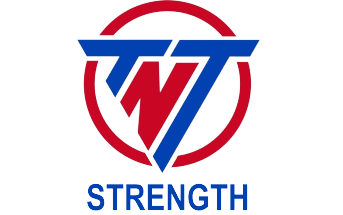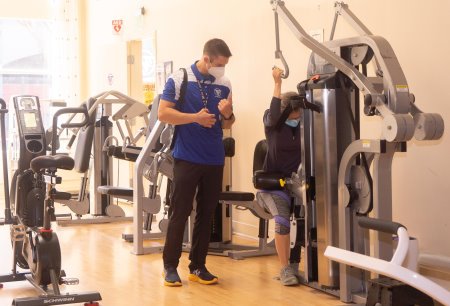
Distance running is a great sport that is enjoyed at a variety of levels by millions of competitive and recreational athletes. Whether you prefer to jog a couple of miles through the neighborhood, or are training to complete a marathon, distance running is a highly effective and efficient means of aerobic conditioning. Unfortunately, distance running is considerably less beneficial for your musculoskeletal system. Injury rates among runners are extremely high. In fact, at the high school level, cross-country runners experience more injuries than athletes in any other sport, including football and gymnastics.
Why is a non-contact sport like running such a high-risk activity? Actually, running involves an incredible amount of contact, but it is with road surfaces rather than other athletes. Every running stride places about three times the weight of your body on your foot, ankle, knee and hip joints. These landing forces may also stress your lower back structures.

The repetitive pounding encountered mile after mile produces a degree of micro-trauma to the shock-absorbing tissues. Under ideal conditions, these tissues recover completely within a 24-hour period. However, there are numerous factors that may interfere with normal recovery processes, eventually resulting in weakened and injury-prone tissues. These factors include longer running sessions, faster running paces, shorter recovery periods between workouts, more downhill running, more hard-surface running, more racing, more general fatigue, and undesirable changes in eating or sleeping patterns.
Of course, you may wisely take steps to reduce the amount of tissue trauma and decrease your risk of running-related injuries. Such precautions include making very gradual increases in training distances and speeds, taking sufficient recovery periods (particularly between hard training sessions), selecting user-friendly running courses (soft surfaces and level terrain), competing in fewer races, avoiding over-fatigue, and paying careful attention to proper nutrition and sleep.
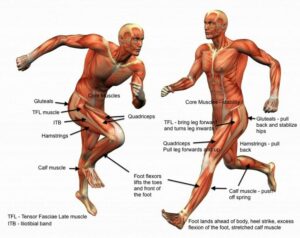
However, one of the most effective means for minimizing tissue trauma is to develop stronger muscles, tendons, fascia, ligaments and bones. This is the primary reason that every runner should perform regular strength exercise. Consider the results of our four-year strength training project with the Notre Dame High School girls’ cross-country and track teams.
Notre Dame High School Strength Training Program For four consecutive years, 30 distance runners from Notre Dame High School participated in a basic and brief strength training program during the summer and winter months between their cross-country and track seasons. Every Monday, Wednesday, and Friday, they performed 30 minutes of strength exercise (12 Nautilus machines) that addressed all of their major muscle groups. Each of these years, the cross-country team won both the Massachusetts and New England championships in this sport. More important, during the four years that they did strength training, only one girl experienced an injury that resulted in a missed practice session or meet.
Strength Training Benefits
The Notre Dame runners realized that a sensible strength training program provides many benefits for runners. These include the following:
-
Greater muscle strength
-
Greater muscle endurance
-
Greater joint flexibility
-
Better body composition
-
Reduced injury risk
-
Improved self-confidence
-
Improved running economy
While the first six strength training benefits should be self-explanatory, you may be intrigued by improved running economy. In a 1995 study at the University of New Hampshire, the women cross-country runners who did strength training experienced a significant improvement in their running economy. They required 4 percent less oxygen at sub-maximum running speeds (7:30, 7:00, and 6:30 minute mile paces), meaning that they could run more efficiently and race faster than before.
Runner Concerns
With so many advantages, why do so few runners regularly perform strength exercise? Consider these four concerns that keep many runners from strength training:
-
Increased body-weight
-
Decreased movement speed
-
Less fluid running form
-
Fatigued muscles
Let’s take a closer look at each of these issues.
Increased Body-weight
Very few people who perform strength exercise have the genetic potential to develop large muscles. This is especially true for distance runners, who typically have ectomorphic (thin) physiques. Strength training increases their muscle strength and endurance, but rarely results in significant weight gain.
Decreased Movement Speed
With respect to running speed, our studies and many others have shown that greater strength results in faster movement speeds. We need only look at sprinters and middle distance runners to realize that strength training has a positive impact on running speed, as essentially all of these athletes perform regular strength exercise.
Less Fluid Running Form
Running involves coordinated actions of the legs and the arms, and one cannot function without the other. Your right arm moves in mirror image with your left leg, and your left arm counterbalances your right leg in perfect opposition. That is why it is almost impossible to run fast and move your arms slow or to move your arms fast and run slow. By strengthening the upper body muscles, you more effectively share the running effort between your arms and legs, resulting in more fluid running form.

Fatigued Muscles
It is true that a strenuous strength training session can cause a considerable amount of muscle fatigue that could adversely affect the quality and quantity of your runs. That is why we recommend brief strength workouts that do not leave you feeling enervated or exhausted. Remember that you are strength training to enhance your running performance, not to become a competitive weightlifter. Our program of strength training requires just one set of exercise for each major muscle group, which does not take much time and does not produce much lasting fatigue. You may also choose to strength train only one or two days per week, which should make muscle fatigue even less likely.
Runners’ Strength Training Program
The strength training protocol followed by the Notre Dame athletes, and all of our runners, is a comprehensive conditioning program that addresses all of the major muscle groups in the body. We do not attempt to imitate specific running movements or emphasize specific running muscles, because this typically results in an overt-rained, imbalanced, and injury-prone musculoskeletal system.
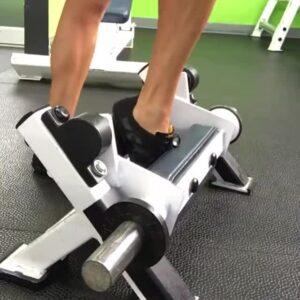
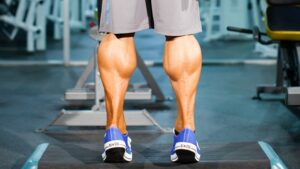
For example, the calf (gastrocnemius and soleus) muscles are used extensively in running. Due to their involvement in every running stride, many people think that runners should strengthen their calf muscles. Indeed they should, but it is even more important to strengthen their weaker counterpart, the shin (anterior tibial) muscles. If you strengthen only the larger and stronger calf muscles they will eventually overpower the smaller and weaker shin muscles, which may lead to shin splints, stress fractures, achilles tendon problems, and other lower leg difficulties. With this in mind, our runners always conclude their strength workouts with a set of weighted toe raises to strengthen the shin muscles and maintain balance within the lower leg musculature.
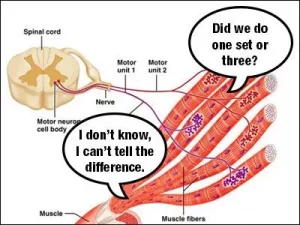
Some people believe that runners should complete numerous sets and many repetitions with light resistance to enhance their endurance capacity. However, this is not our purpose in performing strength training. Remember that running is best for improving cardiovascular endurance, and that strength training is best for increasing musculoskeletal strength.
Generally, muscle strength is best developed by training with moderate weight-loads (about 75 percent of maximum) for 8 to 12 repetitions per set. However, distance runners typically possess a higher percentage of slow-twitch muscle fibers, and therefore attain better results by training with about 12 to 16 repetitions per set. You should add 1 to 5 pounds more resistance whenever you complete 16 repetitions in good form. One set of each exercise is sufficient for strength development.
There is no reason to train with fast movement speeds, because training fast will not make you faster and training slow will not make you slower. Exercising with controlled movement speeds maximizes muscle tension and minimizes momentum for a better training effect. We recommend six-second repetitions, taking two seconds for each lifting movement and four seconds for each lowering movement.
Research supports three non-consecutive strength training sessions per week for best results, but fewer workouts can produce significant strength gains. Our recent studies have shown two weekly workouts to be 82 percent as effective and one weekly workout to be 69 percent as effective as three-day-per-week strength training.
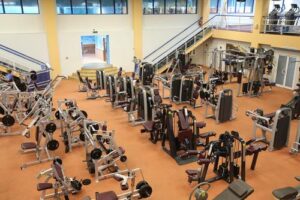
Summary of Strength Training Guidelines
-
Exercise all of the major muscle groups
-
Perform 12 to 16 repetitions per set
-
Add one to five pounds whenever 16 repetitions can be completed
-
Perform one set of each exercise
-
Use controlled movement speeds (six seconds per rep)
-
Train one, two or three non-consecutive days per week
Recommended Strength Exercises For Runners
You may develop muscle strength with a variety of exercises using free-weights or machines. The following section presents recommended strength exercises for the major muscle groups.
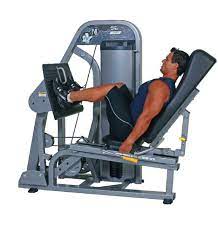
Leg Muscles
Although barbell squats are the traditional leg exercise, most runners may do better to avoid placing a heavy barbell across their shoulders. Dumbbell squats are an acceptable alternative, but it may be difficult to hold enough weight to appropriately stress the large leg muscles.
Our recommendation is leg presses on a well-designed machine that offers a full movement range and good back support. It may be advisable to precede leg presses with leg extensions that target the quadriceps and leg curls that target the hamstrings. One set of each exercise is sufficient, but you may perform an additional set if you desire.

Upper Body Muscles
The typical exercises for the upper body are bench presses for the chest muscles, bent rows for the mid-upper back muscles, and overhead presses for the shoulder muscles. These are acceptable exercises, but are much safer when performed with dumbbells rather than barbells. For example, because there is no back support in a barbell bent row, the stress to the low-back area is 10 times the weight of the barbell. By using one dumbbell, and placing your other hand on a bench for back support, this exercise can be performed more safely and effectively.
If you have access to machines, we recommend chest crosses for the chest muscles, pullovers for the mid and upper back muscles, and lateral raises for the shoulder muscles. These machines require rotary movements that better isolate the target muscle groups. If you prefer linear movements that involve more muscle groups, well-designed chest press, seated row, and shoulder press machines provide combined training for the upper body and arm muscles.
Arm Muscles
The basic exercise for the biceps muscles is the arm curl, performed with barbells, dumbbells, or machines. Training the triceps involves some form of arm extension, either with free-weights or machines.
A good means for working the biceps and upper back muscles together is chin-ups with body-weight or on a weight-assisted chin/dip machine. A good means for working the triceps and chest muscles together is bar dips with body-weight or on a weight-assisted chin/dip machine.
Midsection Muscles
Machines provide the best means for safely and progressively conditioning the muscles of the midsection. In our opinion, the abdominal machine and low-back machine are key exercises for developing a strong and injury resistant midsection. We also recommend the rotary torso machine for strengthening the oblique muscles surrounding the midsection.
If appropriate machines are not available, the basic trunk curl may be the best alternative for abdominal conditioning. The recommended counterpart for the low-back muscles is a front-lying (face down) back extension. Although both of these exercises are performed with body-weight resistance they are reasonably effective for strengthening the midsection muscles.
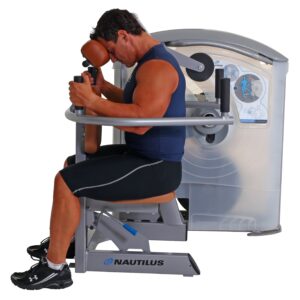
Neck Muscles
The neck muscles maintain head position throughout each run. As the head weighs up to 15 pounds, this is an important function. In fact, the first place where many runners fatigue and tighten up is the neck/shoulder area. We therefore recommend the 4-way neck machine to strengthen these muscles. If you do not have access to this machine, perhaps the best approach is manual resistance. That is, place your hands in front of your forehead to resist slow neck flexion movements, and place your hands behind your head to resist slow neck extension movements.
Table 1. presents the recommended strength training exercises for an overall conditioning program that should be beneficial for runners.
Table 1. Recommended Strength Training Program: Basic Exercises
| Major Muscle Groups | Machine Exercises | Free-Weight Exercises |
| Quadriceps | Leg Extension Machine | Dumbbell Half-Squat |
| Hamstrings | Leg Curl Machine | Dumbbell Half-Squat |
| Chest | Chest Cross Machine | Dumbbell Bench Press |
| Upper Back | Pullover Machine | Dumbbell Bent Row |
| Shoulders | Lateral Raise Machine | Dumbbell Overhead Press |
| Biceps | Biceps Machine | Dumbbell Biceps Curl |
| Triceps | Triceps Machine | Dumbbell Triceps Extension |
| Low Back | Low Back Machine | Back Extension (Bodyweight) |
| Abdominals | Abdominal Machine | Trunk Curls (Bodyweight) |
Once you have mastered the basic exercise program, you may want to add some of the exercises presented in Table 2.
Table 2. Recommended Strength Training Program: Additional Exercises
| Muscle Groups | Machine Exercises | Free Weight Exercises |
| Quadriceps & Hamstrings | Leg Press Machine | Dumbbell Lunge |
| Chest & Triceps | Weight-Assisted Chin/Dip Machine | Bar Dip |
| Upper Back & Biceps | Weight-Assisted Chin/Dip Machine | Chin Up |
| Internal & External Obliques | Rotary Torso Machine | Trunk Curls with Twists |
| Neck Flexors & Extensors | 4-Way Neck Machine | Manual Resistance Neck Flexion & Extension |
| Calves | Calf Machine | Dumbbell Heel Raises |
| Shins | Weight Plate Toe Raises |
Summary
The main objectives of a strength training program for runners is to decrease injury risk and increase performance potential. For best results the program should be high in exercise intensity and low in training time. One good set of 12-16 repetitions for each major muscle group is recommended for a safe, effective and efficient exercise experience. One or two training sessions per week are sufficient, although three weekly workouts produces greater strength gains. Each workout should take no more than 20-30 minutes depending upon the number of exercises performed. The key to productive strength training is proper exercise technique, which includes full movement range and controlled movement speeds. When you make every repetition count, a basic and brief training program should increase your strength significantly (40-60 percent) over a two month training period.
TAKU’s NOTE: This weeks article is courtesy of my Friend and Mentor Wayne L. Westcott, Ph.D., Wayne is one of the top fitness researchers in the world and research director at the South Shore YMCA in Quincy, MA. He is strength training consultant for numerous national organizations, such as the American Council on Exercise, the American Senior Fitness Association, and the National Youth Sports Safety Foundation, and editorial advisor for many publications, including Prevention, Shape, and Club Industry magazines.
TEXT “TNT” TO 855.796.9905 for more info
TNT has over 40 years of combined fitness experience, so if you’re looking for a coach who can train you in person in our Oakland California Studio or online from anywhere in the world, visit our online training page to book a consultation.
